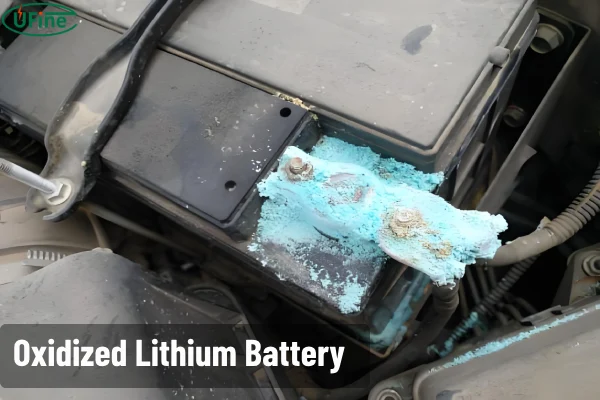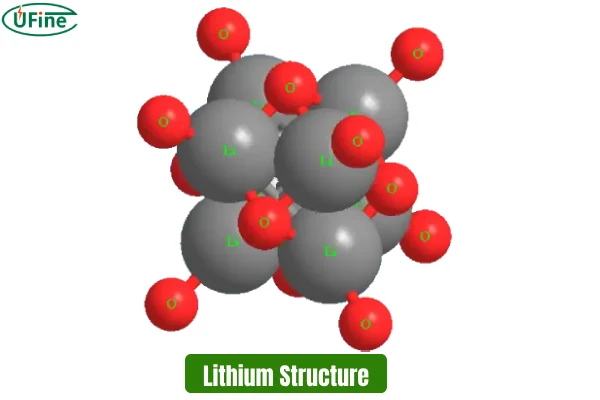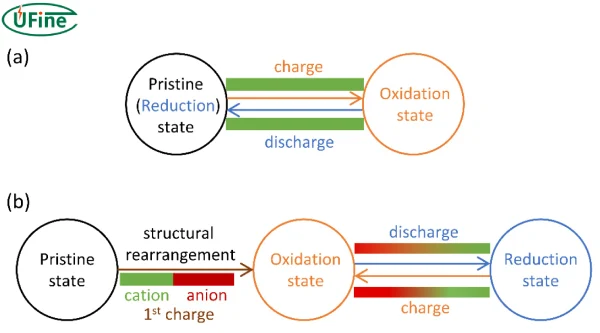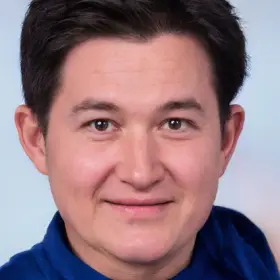Lithium batteries power many of our essential devices, from smartphones to electric vehicles. Despite their efficiency and reliability, these batteries are not immune to problems. One significant issue that can affect their performance and longevity is lithium oxidation. This phenomenon can lead to battery degradation, reduced efficiency, and even safety hazards. In this article, we will delve deep into why lithium batteries oxidize, the signals indicating oxidation, the causes behind it, the harm it brings, and how to prevent it. Let’s explore this critical aspect of battery maintenance in detail.
Part 1. Why does lithium battery oxidize?
Lithium battery oxidation is a complex process involving chemical reactions within the battery. It primarily occurs when lithium within the battery reacts with oxygen, forming lithium oxide. This reaction can begin during the manufacturing process or develop over time as the battery is used.
The Principle of Lithium Oxidation
To understand lithium oxidation, it’s essential to grasp the underlying principles. Lithium, being highly reactive, tends to form compounds with other elements. When lithium comes into contact with oxygen, it readily reacts to form lithium oxide (Li2O). This reaction can be likened to the rusting of iron. Just as iron oxidizes to form rust when exposed to oxygen and moisture, lithium oxidizes to form lithium oxide under similar conditions.
Factors Contributing to Oxidation
Several factors contribute to the oxidation of lithium batteries. During manufacturing, if the battery components are not properly sealed or if impurities are present, oxidation can start early. Furthermore, once the battery is in use, external factors such as exposure to air, moisture, and high temperatures can accelerate the oxidation process. These factors collectively contribute to the gradual degradation of the battery’s performance.
Part 2. Lithium battery oxygen signal

Identifying the signs of lithium battery oxidation early can help in mitigating its adverse effects. Here are some signals that indicate a lithium battery might be undergoing oxidation:
-
Swelling: One of the most noticeable signs of oxidation is the swelling or puffing up of the battery. This occurs because the formation of lithium oxide increases the internal pressure within the battery.
-
Heat: An oxidizing lithium battery may become unusually hot during charging or use. This excess heat is due to the exothermic nature of the oxidation reaction.
-
Reduced Performance: If you notice that the battery is not holding a charge as well as it used to or that it discharges more quickly, oxidation could be a contributing factor.
-
Discoloration: The battery casing or the terminals might show signs of discoloration. This is due to the chemical reactions occurring within the battery.
-
Odor: A chemical smell emanating from the battery can also indicate oxidation. This smell is often a result of the breakdown of the battery’s electrolyte.
Monitoring and Early Detection
Regularly monitoring your lithium batteries for these signals is crucial. Early detection of oxidation can prevent further damage and ensure the safety and longevity of your batteries. If you observe any of these signs, it’s essential to take immediate action.
Part 3. What causes lithium battery oxidation?
Understanding the causes of lithium battery oxidation can help in preventing this issue. Here are some common causes:
-
Exposure to Air: Lithium is highly reactive with oxygen. When a lithium battery is exposed to air, the lithium inside reacts with oxygen to form lithium oxide, leading to oxidation.
-
Moisture: Humid environments can accelerate the oxidation process. Water molecules can infiltrate the battery and react with lithium, forming lithium hydroxide, which further oxidizes to lithium oxide.
-
High Temperatures: Heat speeds up chemical reactions. High temperatures can accelerate the oxidation process, causing the battery to degrade faster.
-
Overcharging: Charging the battery beyond its recommended levels can lead to increased internal pressure and temperature, which promotes oxidation.
-
Aging: Over time, batteries naturally degrade. Older batteries are more prone to oxidation due to prolonged exposure to various environmental factors and the gradual breakdown of their internal components.
Chemical Reactions Involved
The primary chemical reaction involved in lithium oxidation is: 4Li+O2→2Li2O
In the presence of moisture, the reaction can be: 2Li+2H2O→2LiOH+H2
Further oxidation leads to: 4LiOH+O2→2Li2O+2H2O
These reactions highlight how lithium interacts with oxygen and moisture, leading to the formation of lithium oxide and other compounds that contribute to battery degradation
Part 4. What harm does lithium oxidation do to lithium batteries?
Lithium oxidation can have several detrimental effects on batteries. Understanding these harms is crucial for maintaining battery health and safety.
-
Reduced Capacity: One of the primary effects of oxidation is the reduced capacity of the battery. The formation of lithium oxide takes up space within the battery, reducing the amount of active lithium available for charge storage. This results in the battery holding less charge and discharging faster.
-
Shortened Lifespan: Oxidation accelerates the aging process of the battery. As the internal components degrade, the battery’s overall lifespan is shortened, leading to the need for more frequent replacements.
-
Safety Hazards: Oxidized batteries can pose significant safety risks. Swollen batteries can leak or, in extreme cases, explode. The heat generated during oxidation can also lead to fires, especially if the battery is damaged or mishandled.
-
Efficiency Loss: As oxidation progresses, the battery becomes less efficient. This inefficiency affects the performance of devices powered by the battery, leading to shorter usage times and more frequent recharging.
Impact on Device Performance
The reduced capacity and efficiency loss caused by lithium oxidation can significantly impact the performance of electronic devices. Devices that rely on a steady power supply may experience interruptions, slower operation, or complete failure if the battery cannot deliver sufficient power.
Part 5. Can oxidized lithium batteries still be used?
While it is technically possible to use oxidized lithium batteries, it is not recommended. Here’s why:
-
Compromised Performance: Oxidized batteries do not perform as well as non-oxidized ones. Their reduced capacity and efficiency mean that they will not power devices for as long or as effectively.
-
Safety Risks: The safety hazards associated with oxidized batteries, such as swelling, leaks, and potential explosions, make their use risky. It’s better to replace them to avoid these dangers.
-
Inconsistent Reliability: Oxidized batteries may exhibit inconsistent performance, leading to sudden power drops or failures. This unreliability can be problematic, especially in critical applications.
When to Replace an Oxidized Battery
If you notice any signs of oxidation, such as swelling, heat, or reduced performance, it’s best to replace the battery. Using a compromised battery can lead to further damage to your device and pose safety risks.
Part 6. How to prevent lithium battery oxidation?
Prevention is the key to extending the life of your lithium batteries and ensuring their safe and efficient operation. Here are some effective prevention tips:
-
Store Properly: Store batteries in a cool, dry place away from direct sunlight. Extreme temperatures and humidity can accelerate oxidation.
-
Avoid Overcharging: Follow the manufacturer’s charging guidelines. Overcharging can increase internal pressure and temperature, promoting oxidation.
-
Use Protective Casings: Protective casings can shield batteries from air and moisture, reducing the risk of oxidation.
-
Regular Checks: Inspect your batteries regularly for any signs of oxidation. Early detection can help prevent further damage.
-
Temperature Control: Avoid exposing batteries to high temperatures. Keeping them at a moderate temperature can slow down the oxidation process.
-
Keep Contacts Clean: Ensure that the battery contacts are clean and free from corrosion. Corroded contacts can increase resistance and generate heat, accelerating oxidation.
Best Practices for Battery Maintenance
Implementing best practices for battery maintenance can significantly reduce the risk of oxidation. Regularly check your batteries, follow proper charging and storage procedures, and replace batteries showing signs of wear or oxidation.
Understanding and preventing lithium oxidation is essential for anyone using lithium batteries. By recognizing the signs, understanding the causes, and implementing preventive measures, you can ensure the longevity, efficiency, and safety of your batteries. Regular maintenance and vigilance are key to avoiding the detrimental effects of lithium oxidation.
Related Tags:
More Articles

LiFePO4 Battery 12V vs. 24V vs. 48V: Which is Better?
Comparing 12V, 24V, and 48V LiFePO4 batteries? Discover which is best for your needs. Get informed and make the right choice today!
How Long Will LiFePO4 Battery Life Last?
Want to know the lifespan of LiFePO4 batteries? Explore key factors affecting their durability and maximize your investment. Find out more now.
What Is the Right Watch Battery Voltage for Your Timepiece? A Complete Guide
Learn everything about watch battery voltage, including how it works, types of batteries, and tips for choosing the right one for your watch.
The Energy Density of Potassium Ion Batteries: How Does It Compare to Lithium and Sodium?
As the world shifts to renewable energy, potassium-ion batteries offer a cost-effective, sustainable alternative to lithium and sodium-ion batteries.
What Is an LMFP Battery? A Complete Guide to the Next-Gen Lithium Battery Technology
Are you curious about LMFP batteries? This guide explores their components, benefits, and potential to revolutionize EVs and energy storage.






